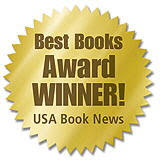Is it too difficult to ask that a magazine about publishing get the terms of its business straight? The article on Kevin Weiss, “Change Makers” in the December 21, 2009 issue of Publishers Weekly is teeming with semantic misnomers. These errors surround the usage of the word “self-publishing.”
Self-publishing, by definition, means that the author publishes their own work. It means that the author forms a publishing company and owns the ISBN. The author/publisher chooses what services they want—editors, cover designers, copyeditors, etc. Finally, they chose a printer—either POD or offset.
Throughout this article, Lynn Andriani incorrectly uses the word “self-publish.” For example, Andriani writes: “It’s been an eventful few weeks for Weiss, thanks to the controversy that erupted last month from writers over Harlequin’s partnering with Author Solutions to launch a line of self-published books.” Let me make this clear: Author Solutions is a PUBLISHING company. They are, specifically, a subsidy or vanity press and hijacked the word “self-publishing” because vanity and subsidy have bad connotations. Subsidy presses own the ISBN and are the publisher; therefore, the author is not self-published.
According to Andriani: “This year, nearly 250,000 people inquired with [Author Solutions] about self-publishing their books…” The article then says “Author House, iUniverse…have published more than 120,000 books.” If the books are “self-published”, why does the article state that the publishing companies published the books?
These so-called “self-publishing publishers” prey on the naïve wannabe author. Writer’s Digest magazine is filled with advertisements from the subsidy presses; they promise the aspiring author to “self-publish” their book for them. Readers of that magazine would never know that real self-publishing exists!
Subsidy publishers are making money, while traditional publishers are hurting. This is why all the traditional publishing houses—like Harlequin—are clamoring to join the bandwagon. It’s a beautiful thing for the subsidies—instead of having to pay royalties and advances to the author, the subsidies collect money from the author! Every subsidy works differently, but they collect fees for all kinds of things, including jacket design, editing, and promotion. So, before a book is sold, the publisher has made money! If the books actually do sell (and the vast majority sell less than 100 copies) then the publisher makes even more money!
This is a win-win for the subsidy publisher.





